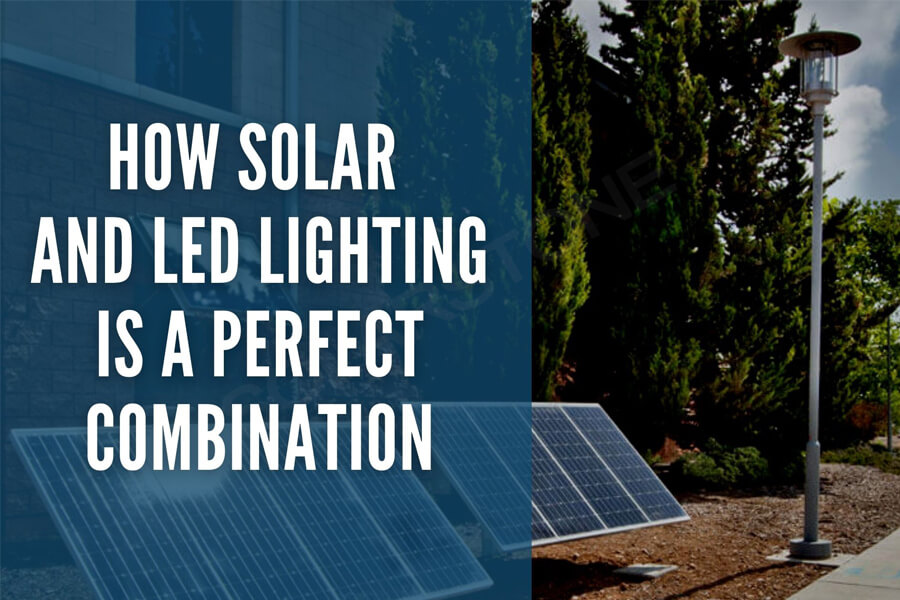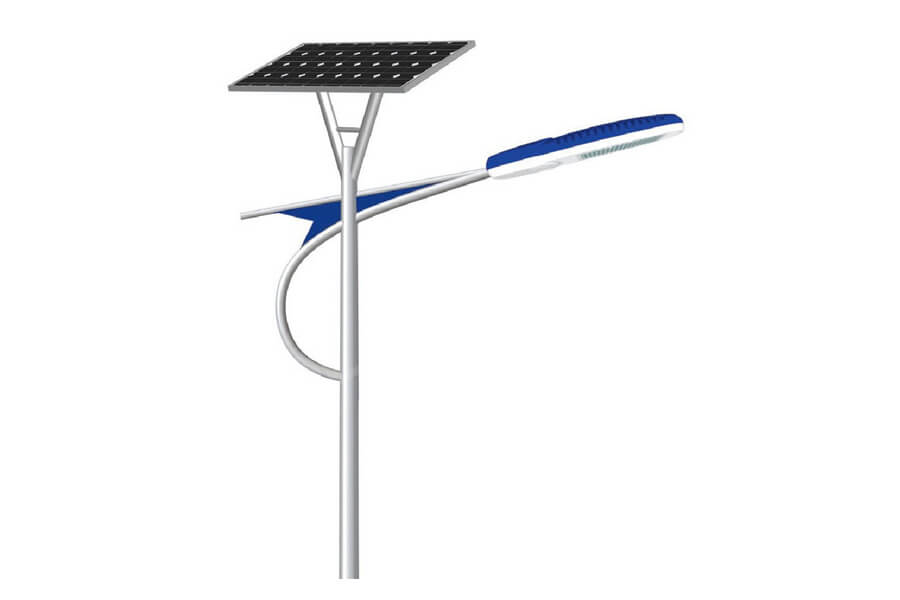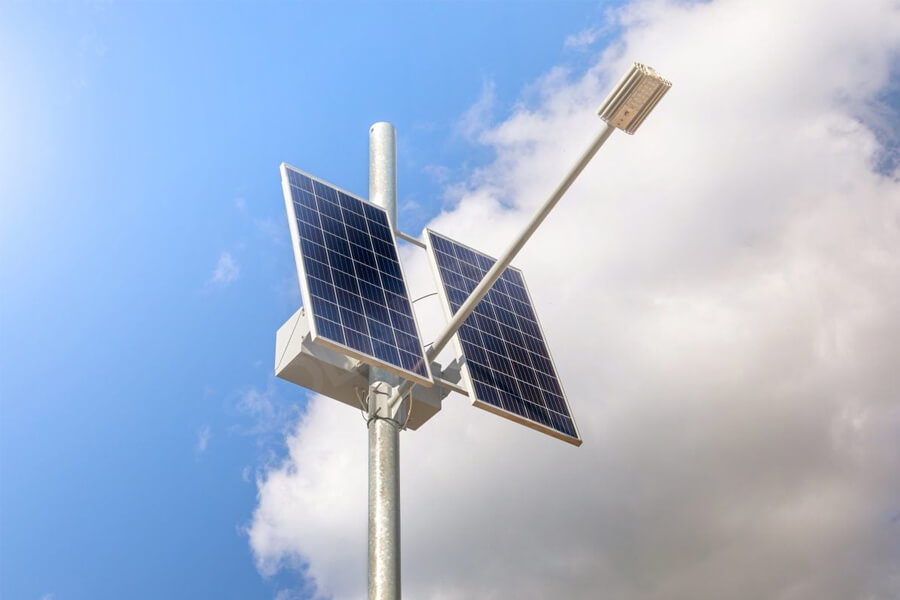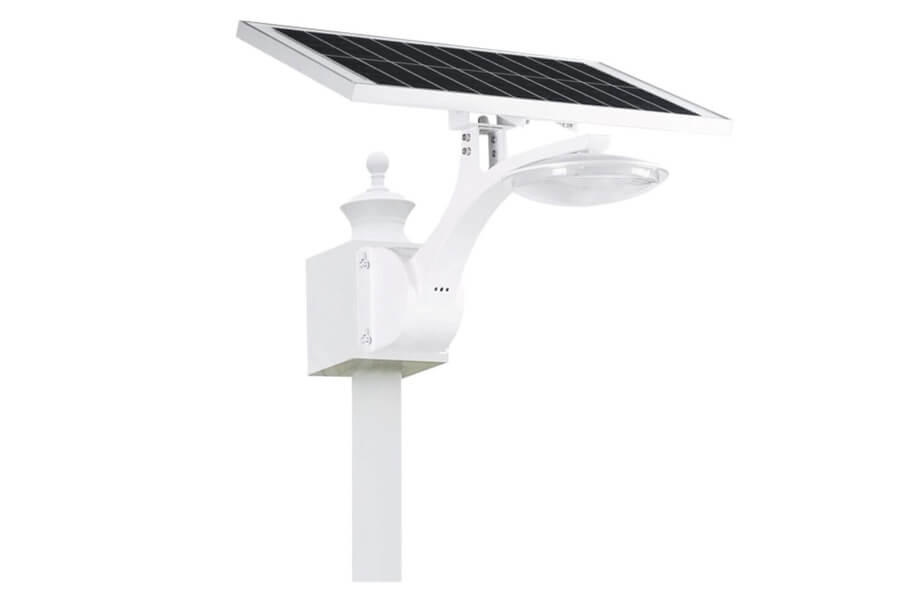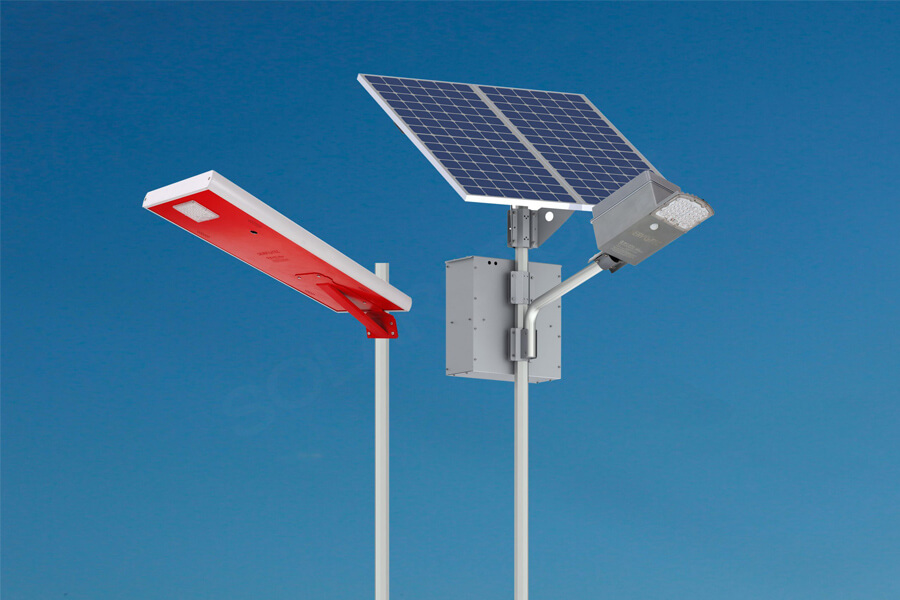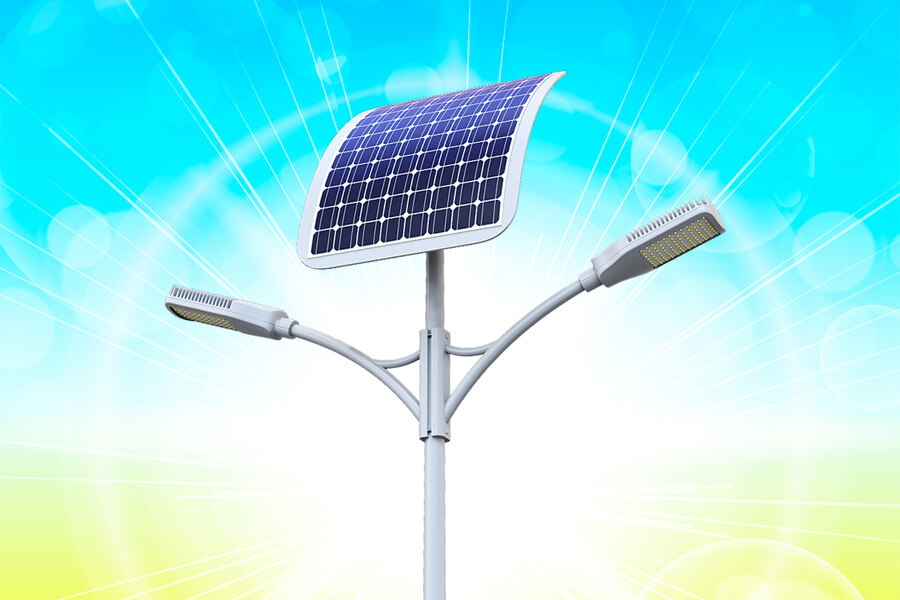In a solar street lamp system, whether the size of the solar panel is correct directly determines the quality of the street lamp.
Some common street lamp failures, such as insufficient lighting time, abnormal charging, and even damage to the solar street lamp system, are related to the selection of solar panels. The following is an analysis of how to select solar panels:
1. The solar panel must select the correct working voltage and current
If the PWM solar charging controller is selected, the open-circuit voltage is generally about 20 V and the working voltage is generally 17.5 V. If the 24V battery is charged, the open-circuit voltage and the working voltage are twice of 12 V.
If the MPPT solar controller is selected, the open-circuit voltage of the solar panel cannot exceed the maximum input voltage of the controller.
2. Selection of solar panel power
The power selection of solar panels shall be calculated according to the following formula:
P=Q*h/U* ξ 1/ ξ 2/ ξ 3*Vp
Explain:
Q – load power
H – daily service time of load
U – system voltage
ξ 1 – Number of solar panel integrated loss systems, taken as 1.05
ξ 2 – Control circuit efficiency, 0.85
ξ 3 – Battery charge and discharge efficiency, 0.85
Vp – working voltage of solar panel
3. The types of solar panels are divided into monocrystalline and polycrystalline
Monocrystalline solar panels are more efficient and have less light decay, but they are more expensive.
The efficiency of polycrystalline solar panels is relatively low, but the price is cheap.
4. Overall dimensions of solar panel
There are many dimensions and specifications. You must decide what size is appropriate according to your installation environment of street lamps. Generally speaking, with the same power, it is more appropriate to choose a smaller size and higher conversion efficiency.
In addition, there are other aspects, including the thickness of the aluminum frame, the transparency of the glass, whether the sealant is uniform, packaging and transportation, which need to be noted.


